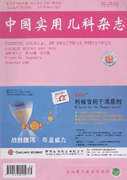To provide the reference of future treatment for end stage renal disease (ESRD) in children by analyzing the clinical characteristics of ESRD patients on maintenance hemodialysis (MHD). Methods 23 cases including 12 males and 11 females aged from 2.5 to 15.6 years on MHD were analyzed. The cause of ESRD and exiting MHD, complication of HD and dialysis adequacy were assessed. Results The main cause of ESRD was chronic glomerulonephritis(87.0%), whereas 21.7% patients of unknown reason. The vascular accesses of all patients were temporary dual-lumen catheters when initiating HD. About 87.0% established arterio-venous fistula successfully later. The mean spKt/V was (1.52±0.39) and URR was (70.70±10.52)% in patients with fistula, which was much higher than (1.08±0.50) and (56.44±17.33)% in patients of catheters respectively. The main complications were hypertension(87.0%),hypotension(5.6%)and dialysis disequilibrium syndrome (4.7%). The reasons of exiting our treatment were going back to local hospital (43.5%), renal transplantation (17.4%), giving up treatment (8.7%) and death (4.3%). Conclusion There is lack of screening and systematic monitoring of ESRD children in our country. Our results indicate that ESRD children should establish arterio-venous fistula as soon as possible in order to achieve HD adequacy. The complication of hypertension should be paid more attention. HD and renal transplantation were main treatment of ESRD children older than school age.

